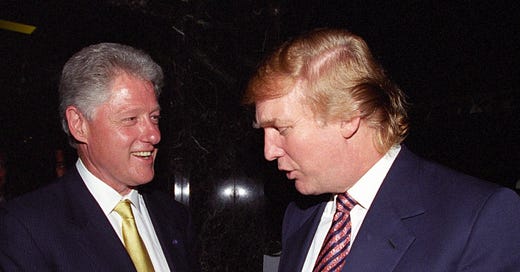DOGE 2.0
Bill Clinton was the first American President to lead a massive reduction in federal government’s operations. The AI platform GROK does a nice job of showing that Trump’s DOGE is not unprecedented.
GROK SAYS
During President Bill Clinton's administration (1993–2001), significant efforts were made to reduce the size of the federal workforce as part of his "Reinventing Government" initiative, led by Vice President Al Gore under the National Performance Review (NPR). The goal was to streamline government operations, cut costs, and improve efficiency.The exact number of civil servants "fired" by Clinton varies depending on how one defines "fired" and the source of the data, as reductions included a mix of layoffs, buyouts, and attrition (natural retirements or resignations not replaced). The NPR aimed to reduce the federal workforce by 272,000 positions by the end of 1999, as outlined in the Federal Workforce Restructuring Act of 1994, which Clinton signed into law. This act authorized voluntary buyouts of up to $25,000 per employee to encourage departures, targeting a reduction of approximately 4% of civilian positions in agencies with over 100 employees.By the end of Clinton’s presidency, the federal civilian workforce (excluding military and postal workers) had shrunk significantly. Estimates of the total reduction range from 351,000 to 426,200 positions, depending on the timeframe and reporting body:Official NPR data and Clinton administration statements often cite a reduction of about 377,000 federal jobs by the late 1990s, with the workforce dropping from around 2.1 million in 1993 to 1.8 million by 2000.Elaine Kamarck, a senior Gore adviser who ran the NPR, testified that between January 1993 and September 2000, 426,200 federal roles were eliminated. However, she noted that only about 10% of these (roughly 42,620) were involuntary layoffs, with the rest achieved through buyouts (about 130,000 employees took them) and attrition.Other sources, like the Office of Personnel Management and historical analyses, align with a net reduction of around 351,000 to 384,000 civilian jobs across Clinton's two terms, accounting for all methods of reduction.Not all of these were outright firings. The buyout program, which ran from 1994 to 1997 and was later extended in some agencies, incentivized voluntary exits, while attrition covered employees leaving naturally. Direct firings were less common due to civil service protections under laws like the 1978 Civil Service Reform Act, which require cause and documentation for terminations. However, some involuntary layoffs did occur, particularly in the early waves targeting lower-level staff (e.g., about 20 White House correspondence workers in 1993) and later in agencies deemed overstaffed.Posts on X and some web commentary exaggerate or simplify this, claiming Clinton "fired" 350,000 to 426,000 workers without context, implying mass terminations. In reality, the process was more gradual and structured, with bipartisan congressional support (the 1994 act passed 391-17 in the House and 99-1 in the Senate). Unlike recent claims about Trump’s 2025 cuts, Clinton’s reductions didn’t face significant legal pushback or accusations of illegality at the time.So, to answer directly: Clinton’s administration reduced the federal civilian workforce by approximately 377,000 positions overall, per the most commonly cited figure from his administration. Of these, around 42,000 to 50,000 were likely involuntary firings, with the majority of the rest coming from voluntary buyouts and attrition. The exact number of "fired" civil servants is hard to pin down precisely due to the mix of methods, but the total headcount reduction is well-documented at around 351,000 to 426,000 over his tenure.





Doge Canada please